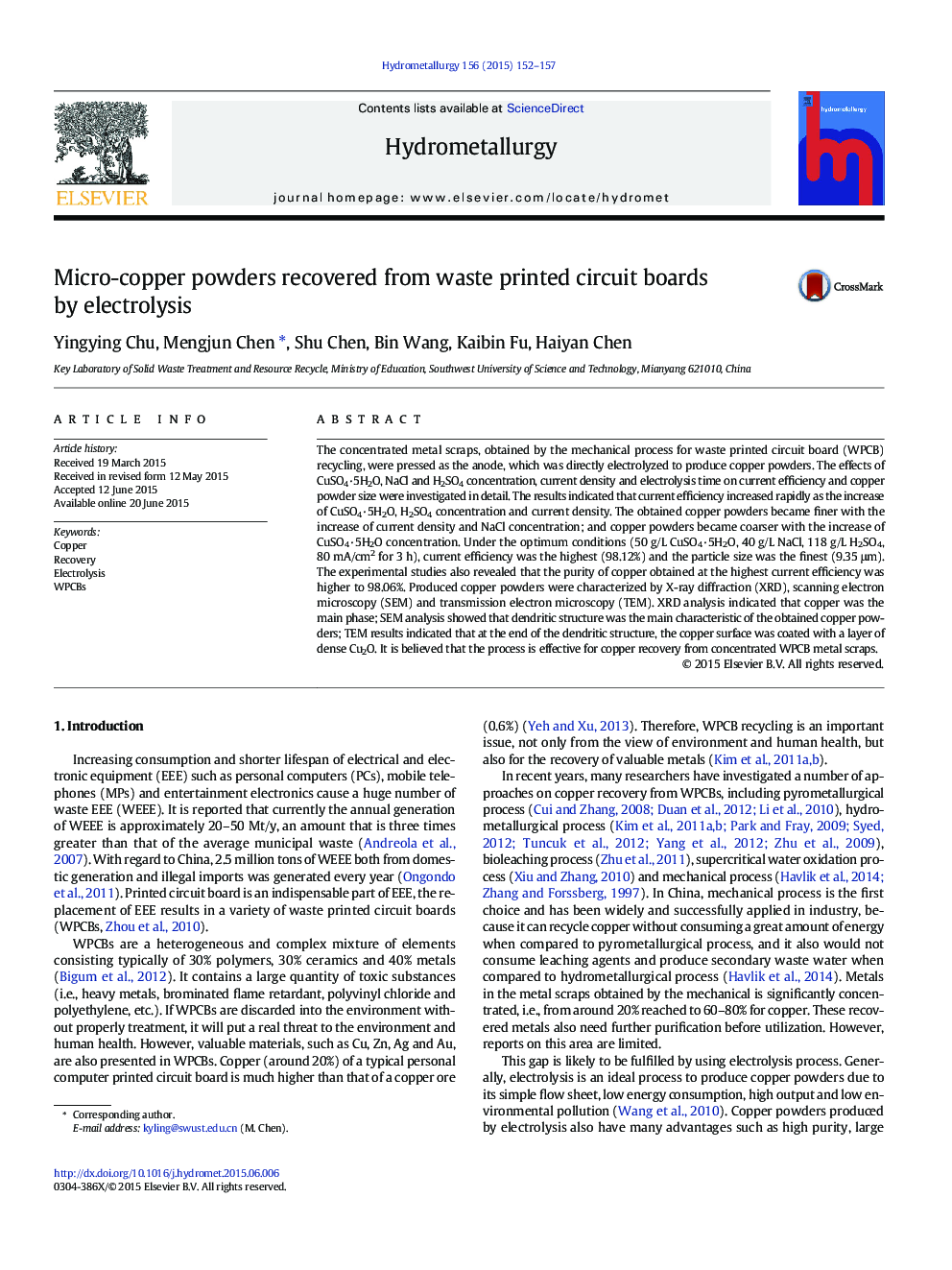| کد مقاله | کد نشریه | سال انتشار | مقاله انگلیسی | نسخه تمام متن |
|---|---|---|---|---|
| 212007 | 462029 | 2015 | 6 صفحه PDF | دانلود رایگان |
• WPCBs metal scraps were successfully used as anode to obtain micro-copper powder by electrolysis without pretreatment.
• Micro copper powders, about 9.35 μm with a purity of 98.12%, were successfully recovered by this process.
• Particle size of the recovered copper powders can be controlled by current density and NaCl concentration.
• The recovered copper powders are dendritic and coated with a layer of dense Cu2O.
The concentrated metal scraps, obtained by the mechanical process for waste printed circuit board (WPCB) recycling, were pressed as the anode, which was directly electrolyzed to produce copper powders. The effects of CuSO4·5H2O, NaCl and H2SO4 concentration, current density and electrolysis time on current efficiency and copper powder size were investigated in detail. The results indicated that current efficiency increased rapidly as the increase of CuSO4·5H2O, H2SO4 concentration and current density. The obtained copper powders became finer with the increase of current density and NaCl concentration; and copper powders became coarser with the increase of CuSO4·5H2O concentration. Under the optimum conditions (50 g/L CuSO4·5H2O, 40 g/L NaCl, 118 g/L H2SO4, 80 mA/cm2 for 3 h), current efficiency was the highest (98.12%) and the particle size was the finest (9.35 μm). The experimental studies also revealed that the purity of copper obtained at the highest current efficiency was higher to 98.06%. Produced copper powders were characterized by X-ray diffraction (XRD), scanning electron microscopy (SEM) and transmission electron microscopy (TEM). XRD analysis indicated that copper was the main phase; SEM analysis showed that dendritic structure was the main characteristic of the obtained copper powders; TEM results indicated that at the end of the dendritic structure, the copper surface was coated with a layer of dense Cu2O. It is believed that the process is effective for copper recovery from concentrated WPCB metal scraps.
Figure optionsDownload as PowerPoint slide
Journal: Hydrometallurgy - Volume 156, July 2015, Pages 152–157
